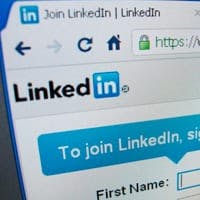LinkedInology: The study of understanding, learning of LinkedIn. You probably haven’t heard of it. Neither had I, but I thought it should exist, seeing this is how I have spent much of my time in the last 18 months. Therefore, I have created the word. So, its not a spelling error, its not incorrect, the word has just been born. So be gentle with it.
Much of the objection to using social media is the time that it takes and what return you should expect for that time. In the business community, the question becomes; “What return should I expect for my investment of time on LinkedIn?”
Indeed for some who have spent lots of time having coffee catchup’s with people they have met on LinkedIn or via other networking activitities, the question becomes more urgent: “Why do people keep wasting my time? My knowledge (advice) has not been acquired for free so why do others expect that I give my time for free?” or “Don’t ask if you can pick my brains on social media, because you can’t, my brains aren’t free and nor is my mortgage, my phone or my time.”
This is a misunderstanding of what you are engaging in. This is a “networking activity”, not a transactional sale in a retail store. The question is not; “Why are you wasting my time?”, but more,”Why aren’t you defining your target market appropriately and implementing an appropriate sales cycle plan.” It also misses the point of connection, communication and referral. Many of your business opportunities can be found in your second level connections.
If your coffee contact is from Linkedin and they have asked you to connect, I would definitely ‘not’ try and ask for a consultation fee prior to that coffee. Before having the coffee I would (research their profile on LinkedIn) and even have a phone conversation to determine what the nature of the relationship might be. Before the meeting you should be able to determine:
a) size of business
b) whether they are looking for contacts, partners or suppliers
c) whether they are out to pick your brains or learn from you
d) whether they are or thinking about being a competitor
From this information you can prepare some objectives of the conversation and how you can both benefit each other (if not at this time) at some time in the future. Much can be learned and shared through such an exchange. If you are able to help someone else an invisible social contract can be established where they are motivated to help you also. The minute you begin networking activities with a swapping money for time is the point at which you miss the social contract and opportunities that can come out of that exchange.
There is also another perspective that may be analogous.If someone calls your business directly and asks to have a discussion or coffee about some potential opportunity would you say “Yes, but I need to charge you a consultation fee”. No, you would not. This is really about understanding a business and sales cycle to a certain extent. Miller Heiman has lots of good quantitative information around this.
The Return on your investment of time can be assessed versus your alternative business development activities like cold calling, direct mail and emarketing for example. Of the 100% of business people you reach via LinkedIn, you will have a number of ratios to work with. First, total number in your potential market, second, the number of prospects, third the number of qualified prospects and then the number of customers. Finally the number of repeat customers.
So lets work backward. If you have 100 connections on linkedIn you may have 10% of these that are relevant prospects that you would like to meet, or inbound request a catchup with you. Of these 10 prospects, perhaps 50% become customers. Therefore, what becomes important is ‘targeting’ the right prospects. So if you are giving away free information to the wrong people, you might be targeting the wrong part of the 90%.
To assist with targeting and increasing your conversion rate , a better understanding of your customers is required. Why did they choose you? Why did they refer you? How can you get more referrals? The question is not why people are wasting ‘your time’ but WHY aren’t you better understanding your target market and how to find them.
Therefore your ROI on LinkedIn will be determined by a couple of factors; your understanding of networking and human relationships; your understanding of marketing and the sales cycle but most important your understanding of ‘LinkedInology.’

